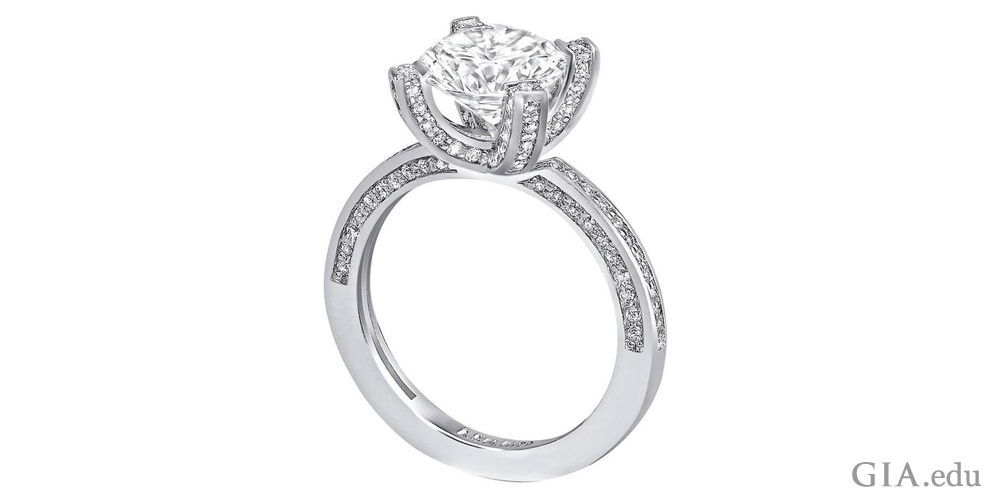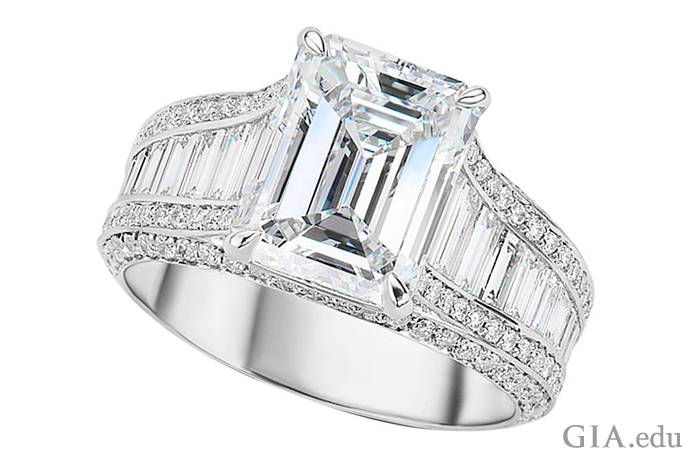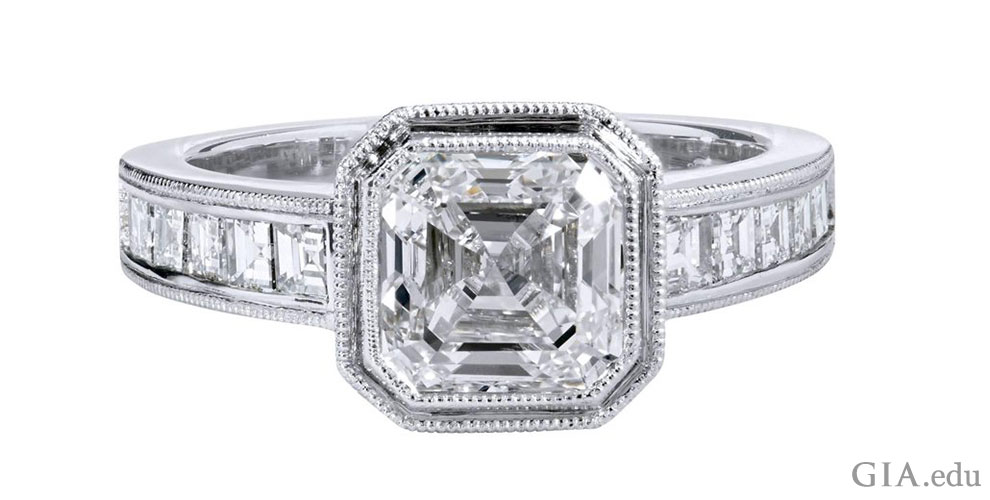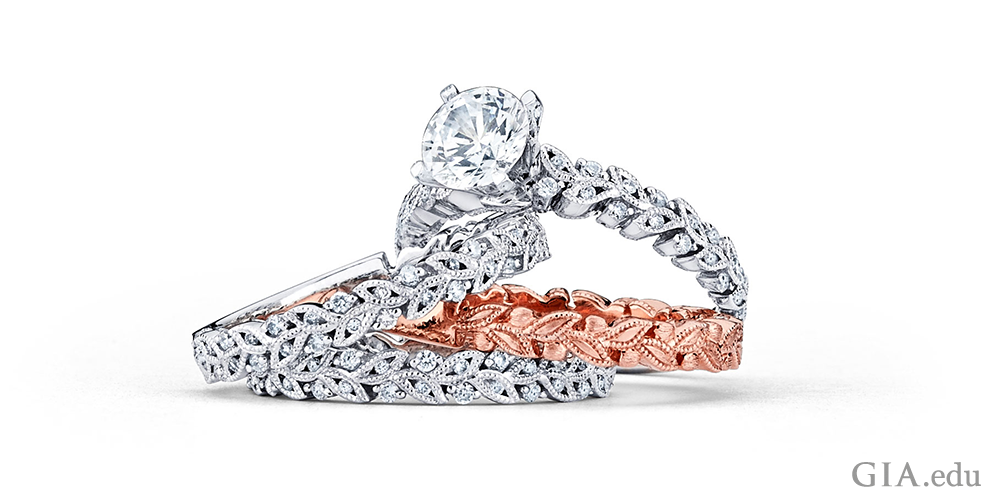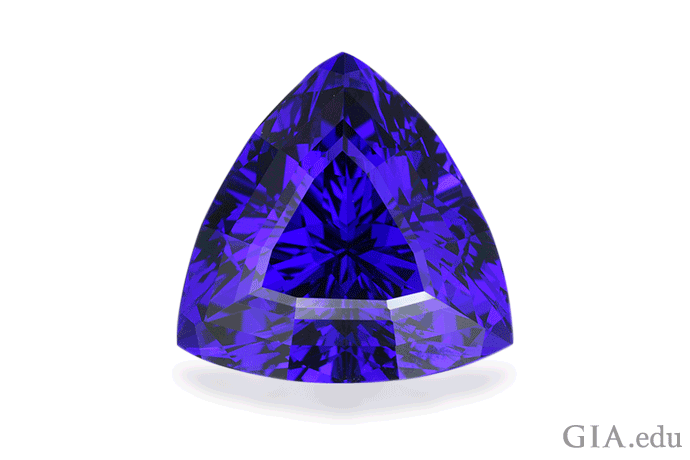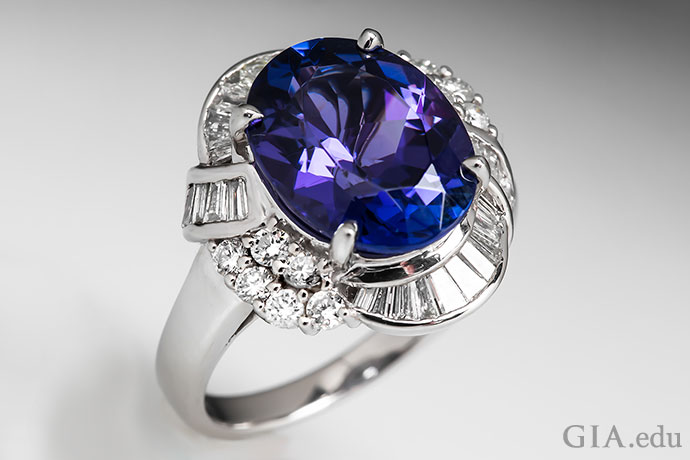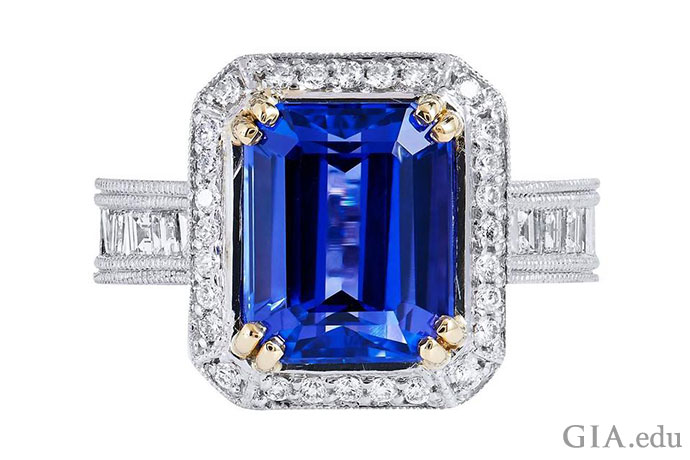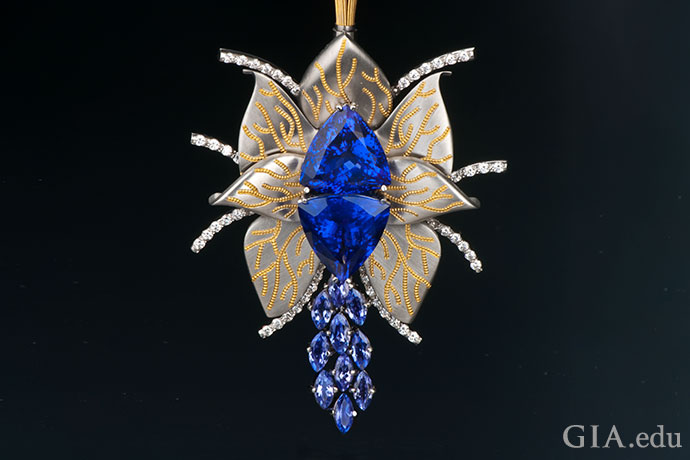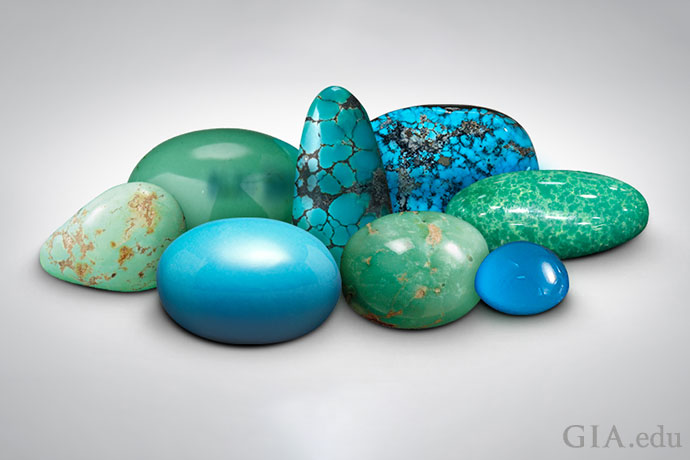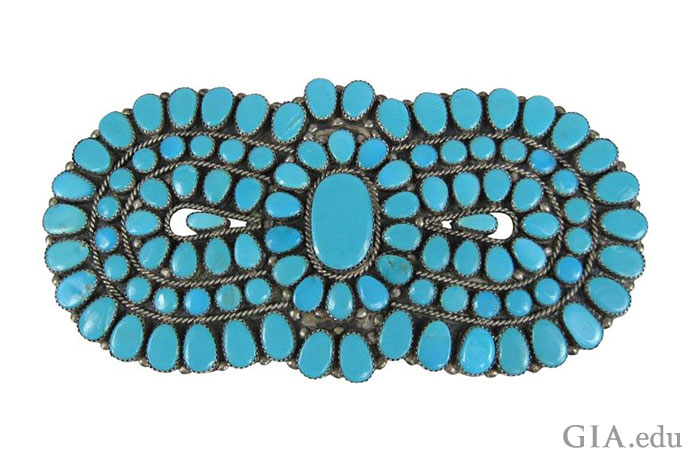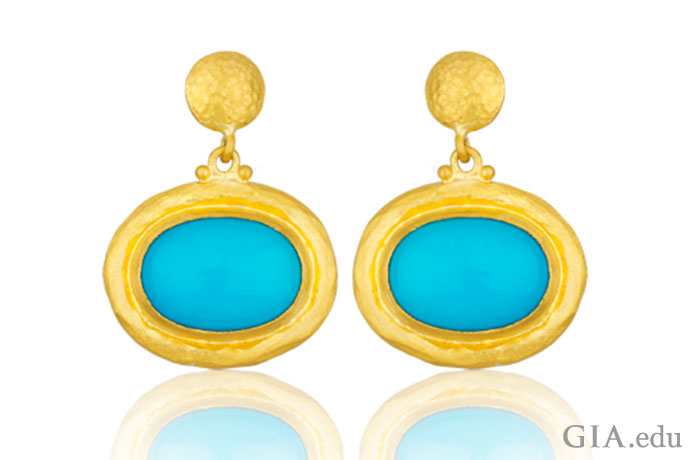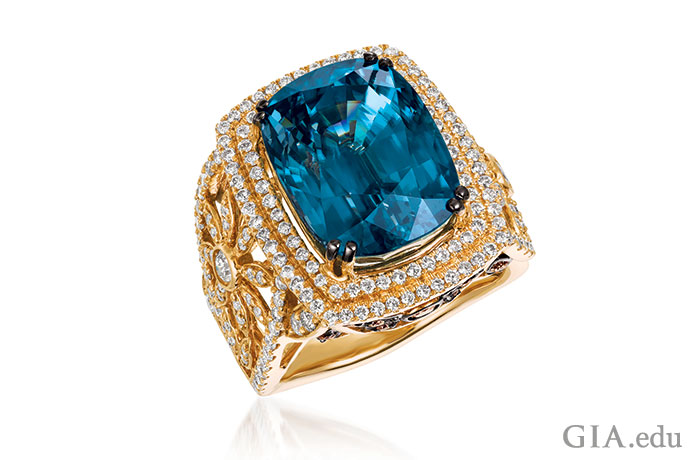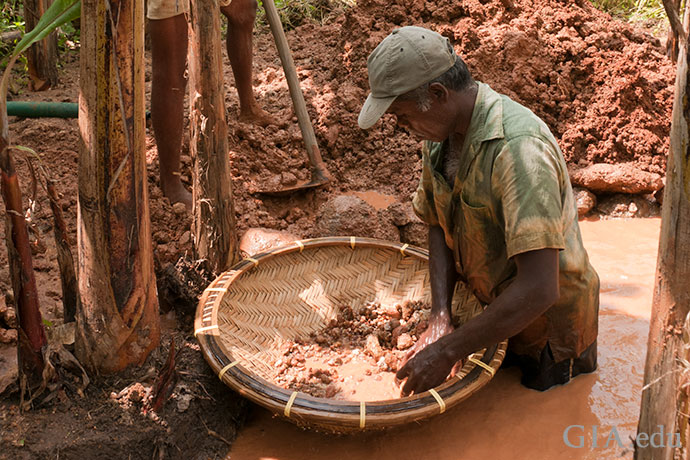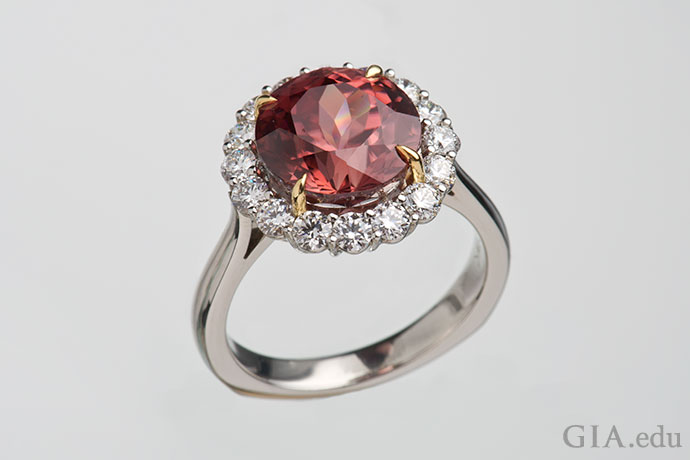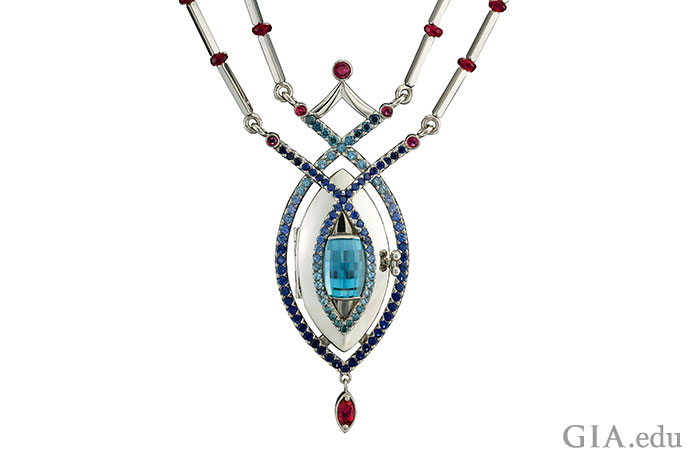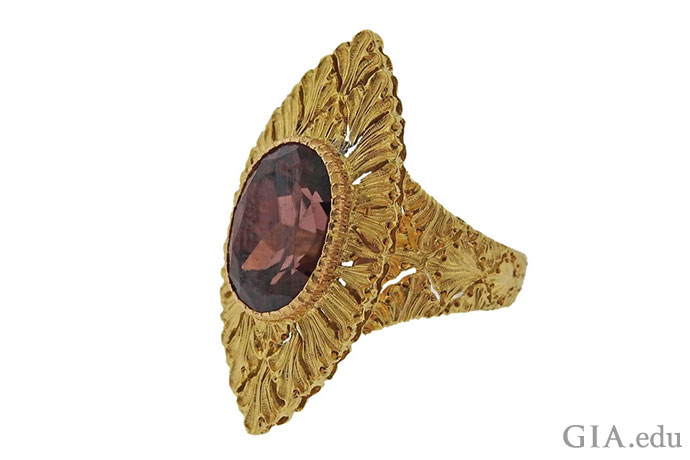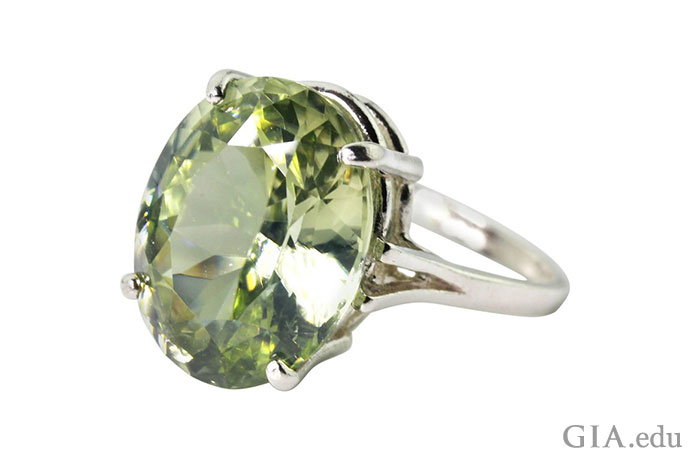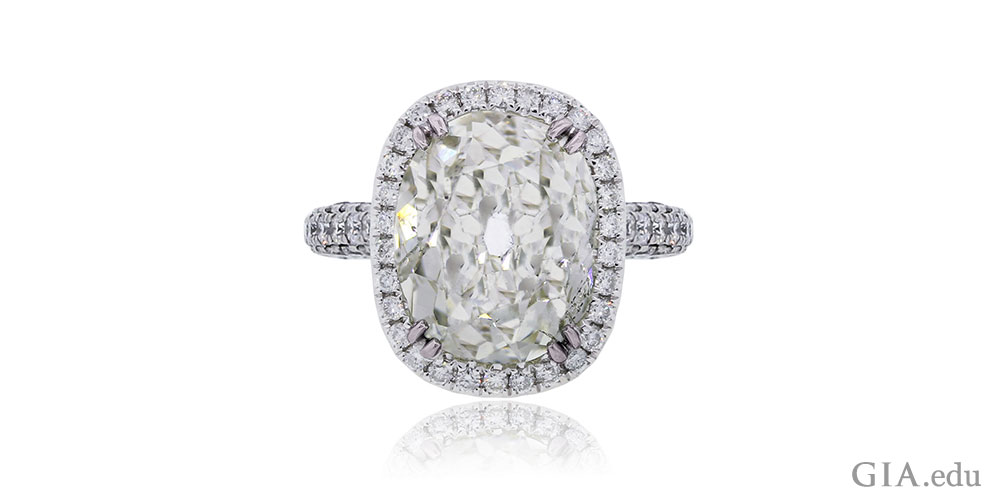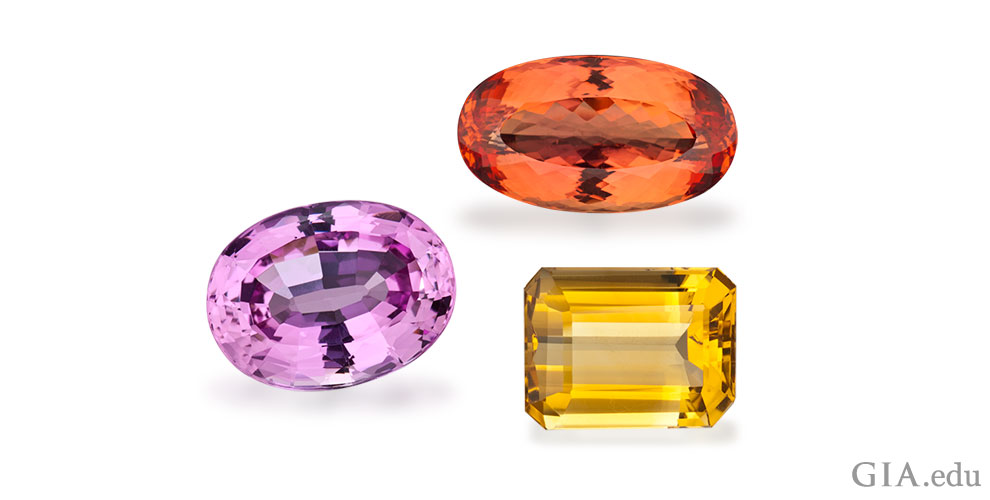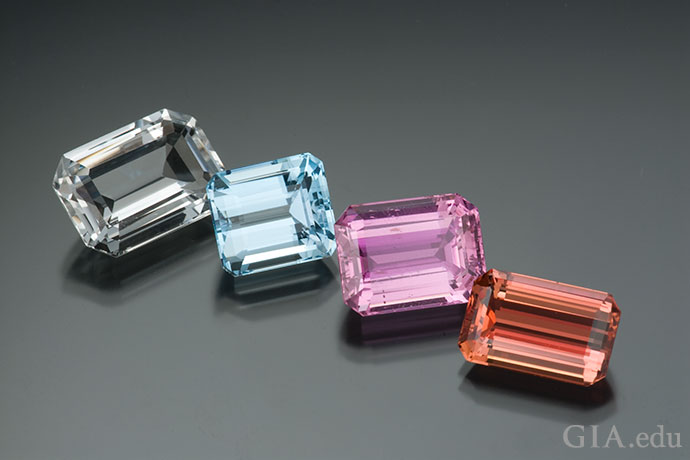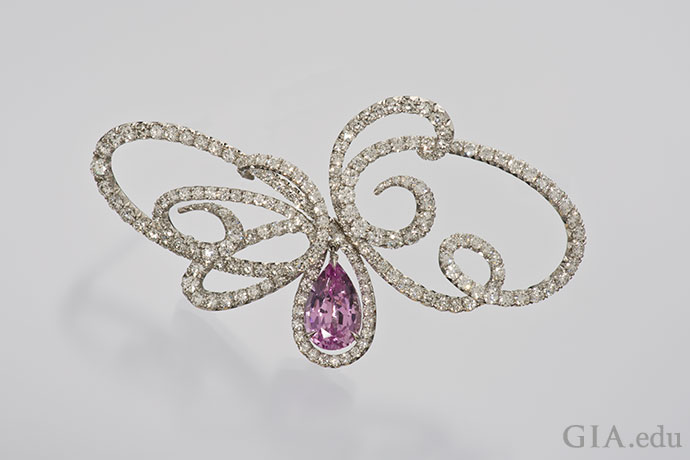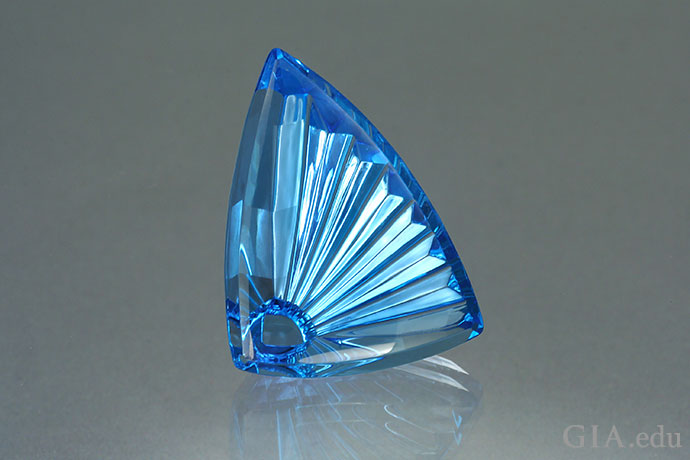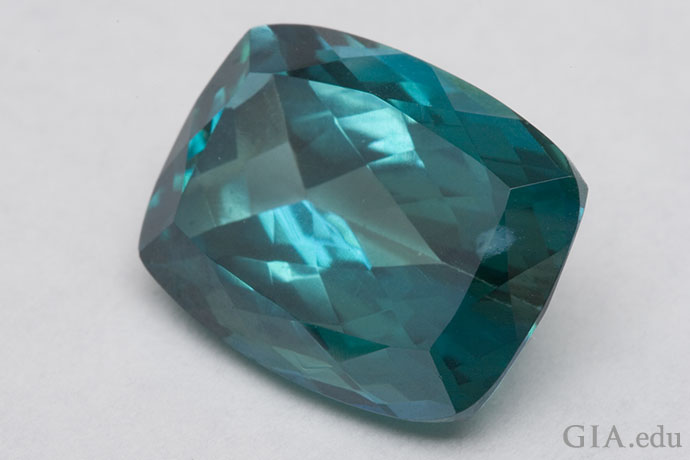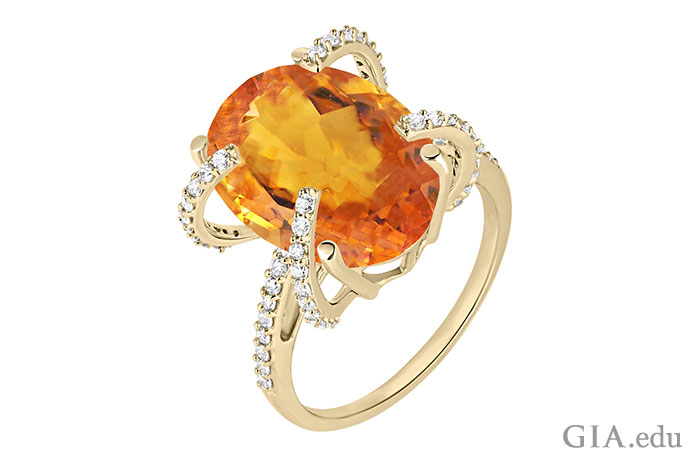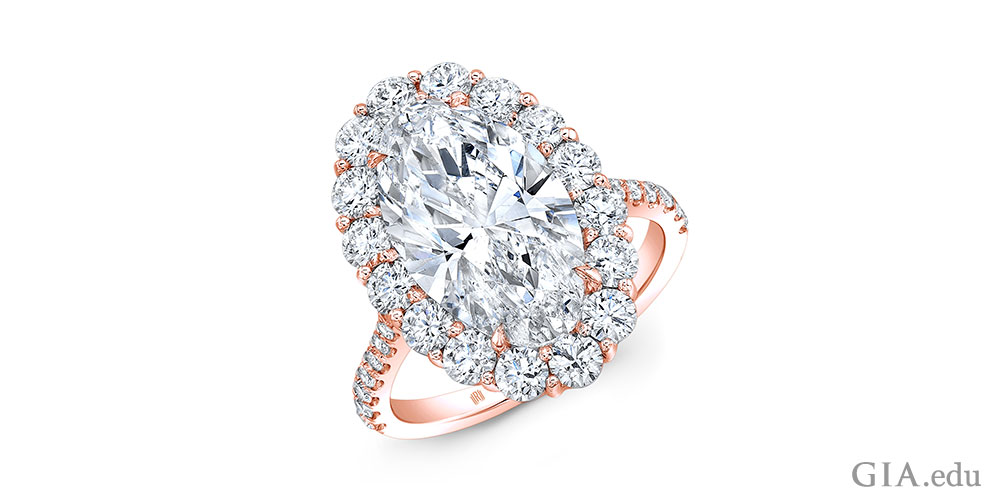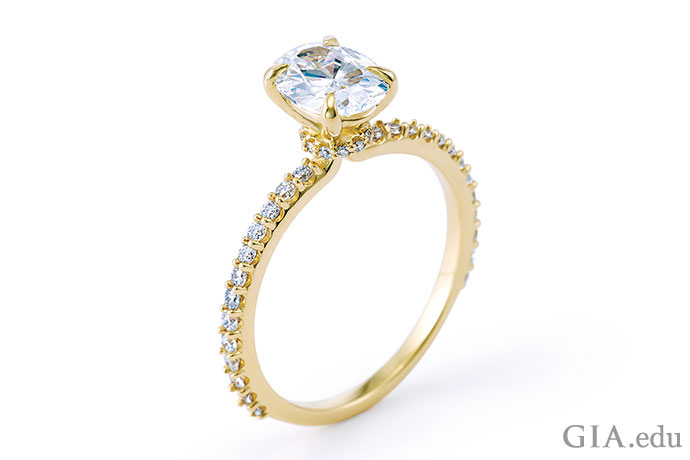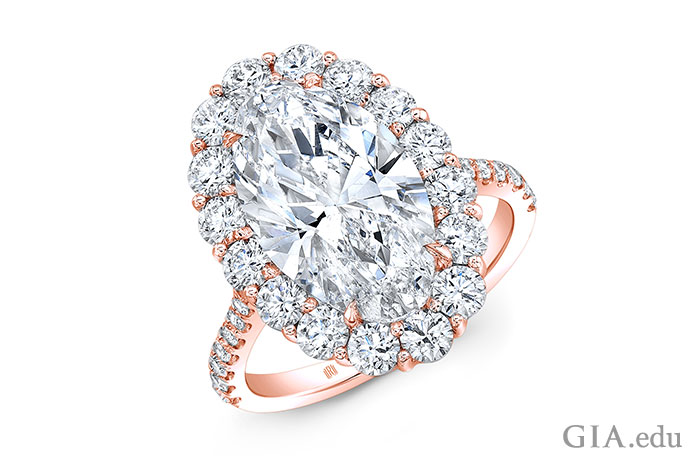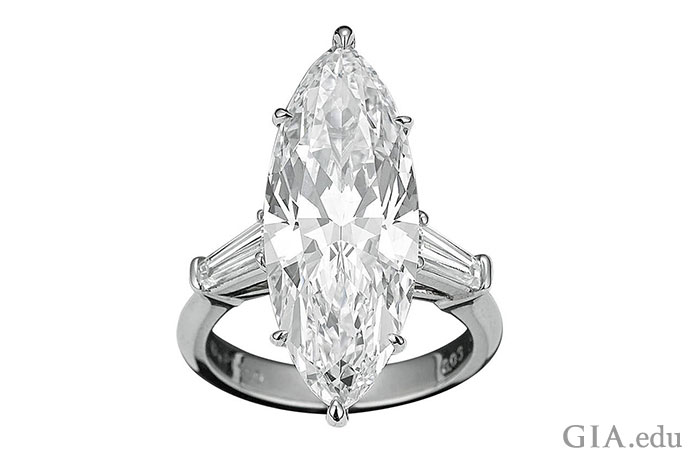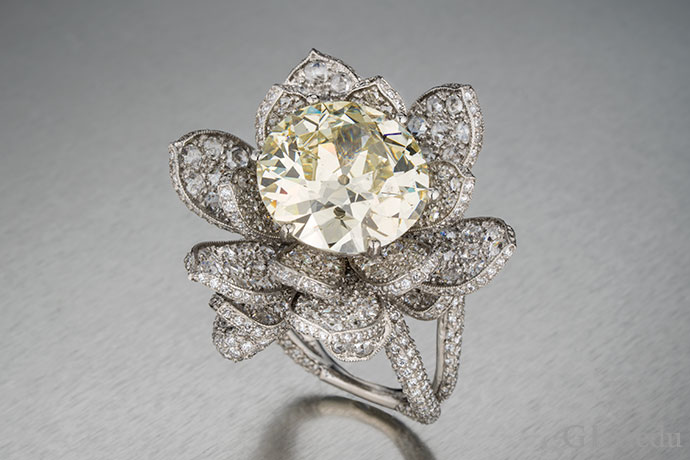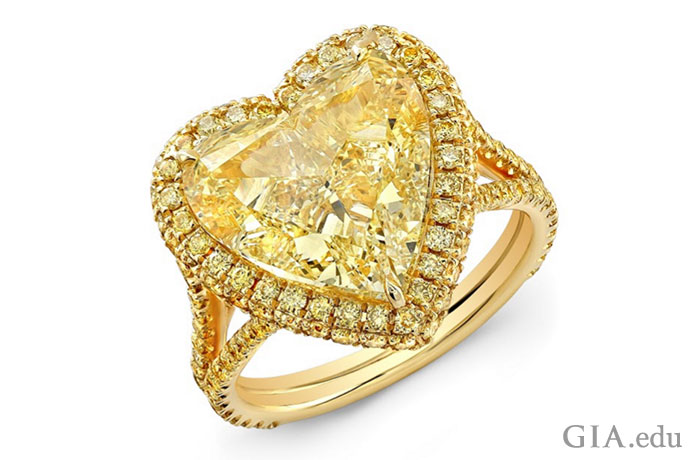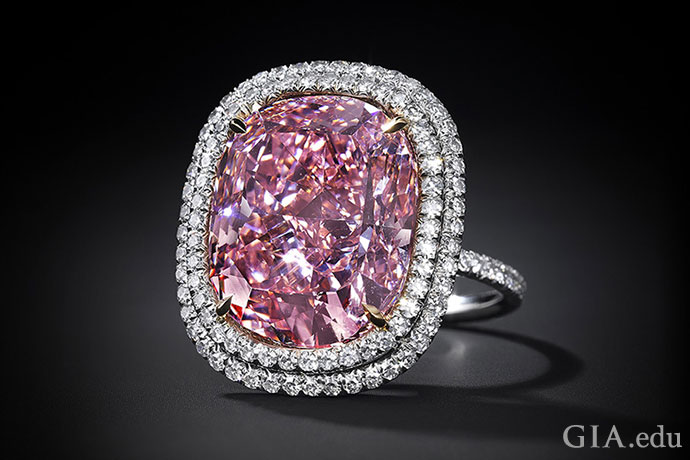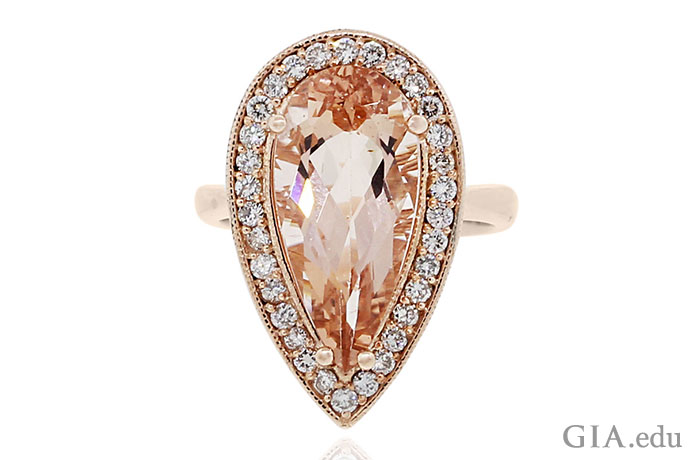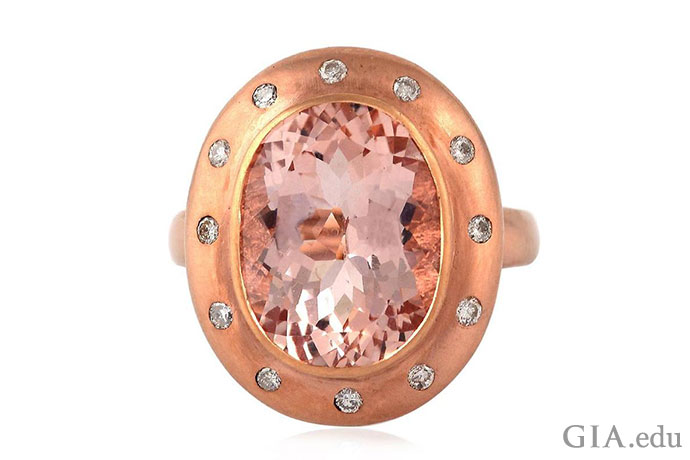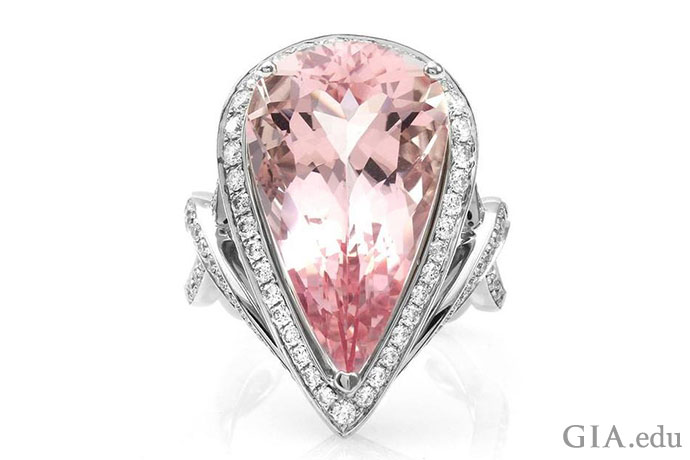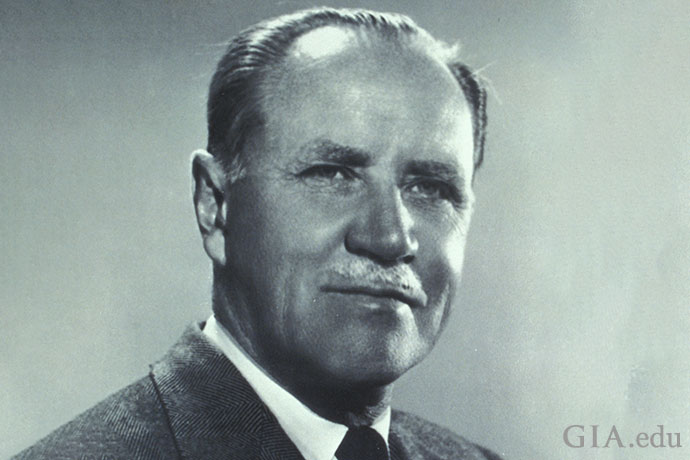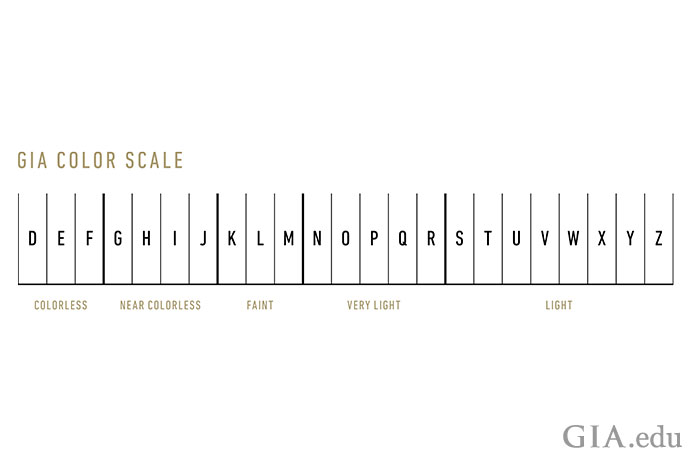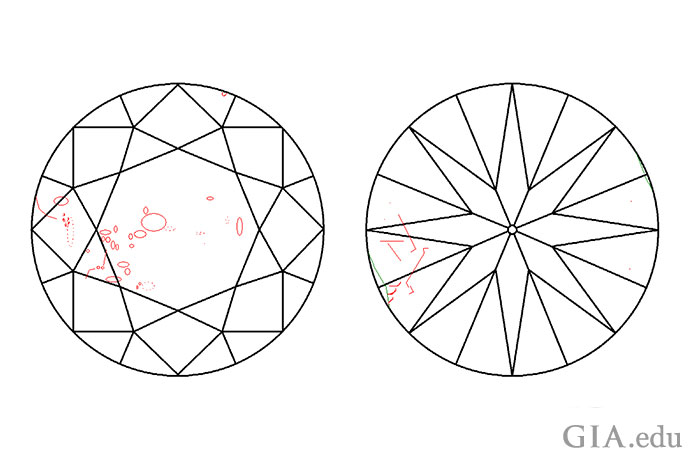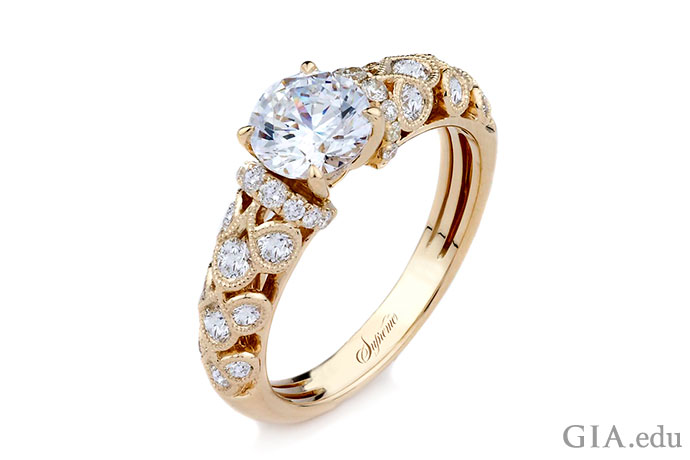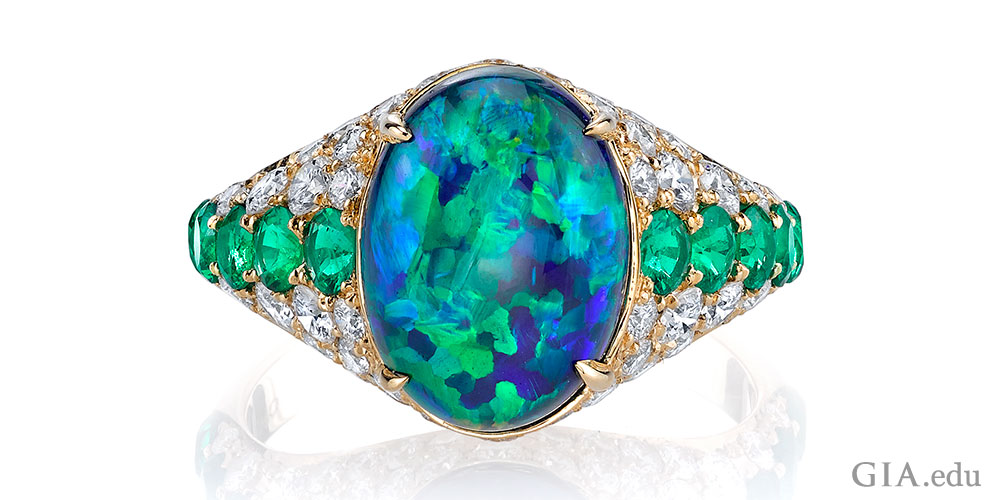If you’re shopping for a diamond engagement ring, you need to know about what diamond color is if you want to understand quality and how diamonds are valued. If you are curious about what colors diamonds come in and how color grade impacts value, check out our seven essential things about diamond color you should know.
In this blog we cover:
- Diamond value is based (in part) on the absence of color.
- A diamond’s color grade should be determined by a grading laboratory.
- Colored diamonds are graded and valued differently from colorless diamonds.
- Treatments can improve diamond color.
- Diamond fluorescence has little to no impact on diamond color.
- Engagement ring settings can influence the perception of diamond color.
- To be sure of a diamond’s color, get a GIA grading report.
1. Diamond value is based (in part) on the absence of color
Diamond color is important: Most diamonds used in engagement rings are near-colorless with hints of yellow or brown. All things being equal, the more colorless a diamond is, the rarer it is, and this rarity will be reflected in its price.

The GIA D-to-Z Color Scale allows for precise measurement of diamond color. Illustration: GIA
GIA’s D-to-Z Color Scale is used to measure the degree of colorlessness of a diamond. The letter “D” represents a colorless diamond, with each following letter representing a diamond that has slightly more yellow or brown.
GIA organizes diamond color into five groups:
- Colorless (D-F): The most rare, and therefore the most valuable
- Near-colorless (G-J): Color is often unnoticeable except by trained graders
- Faint (K-M): Color is still difficult to see by the untrained eye
- Very Light (N-R): Subtle color can be seen in larger stones by an untrained eye
- Light (S-Z): Color can be seen in stones of different sizes. The diamonds appear slightly yellow or brown but do not have sufficient color to be considered a “fancy” colored diamond
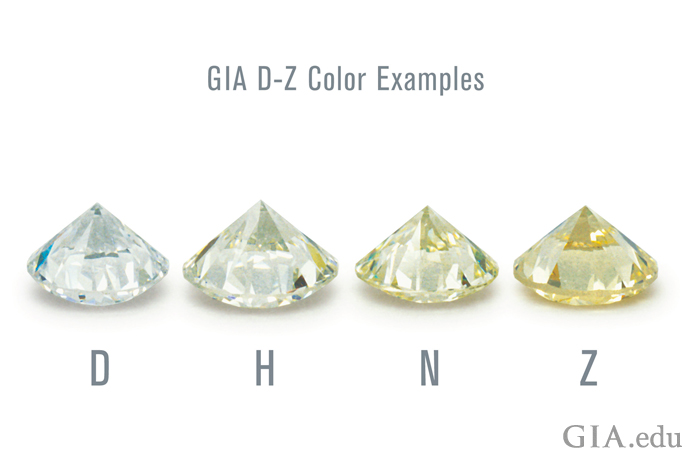
When diamonds at either end of the grading spectrum are placed side by side, it is easy to see the differences in diamond color. Photo: GIA
2. A diamond’s color grade should be determined by a grading laboratory
The distinctions between diamond color grades can be so subtle that they are undetectable to the untrained eye. But they do make a very big difference in diamond price. That’s why determining a diamond’s color grade is best left to a gemological laboratory, like GIA, that has the expertise and processes to ensure objective, unbiased color grading.
In working to evaluate what color a diamond is, GIA graders follow a strict protocol that dictates the type of lighting and neutral background used, as well as precisely how the diamond should be held and viewed during the assessment. A color grade is determined by comparing the diamond to masterstones – a set of color-comparison diamonds of known position on the GIA D-to-Z color grading scale – when all are placed table down in a grading tray. This viewing position reduces the complex appearance of a faceted colorless to near-colorless diamond when viewed face up.

One look at this 6.75 carat (ct), F-color, SI-clarity round brilliant and you’ll know why diamonds are the universal symbol of love. Courtesy: 1stdibs.com
3. Colored diamonds are graded and valued differently from colorless diamonds
Diamond color is arguably the most important factor in colored diamonds. Some common colors that diamonds come in are yellow, brown, pink, red, blue, orange, purple, green, gray or black. This does not include diamonds in the normal color range that are slightly yellowish, slightly brownish or slightly grayish. When the color is natural, the diamonds are called fancy-color diamonds, fancy diamonds or fancies.
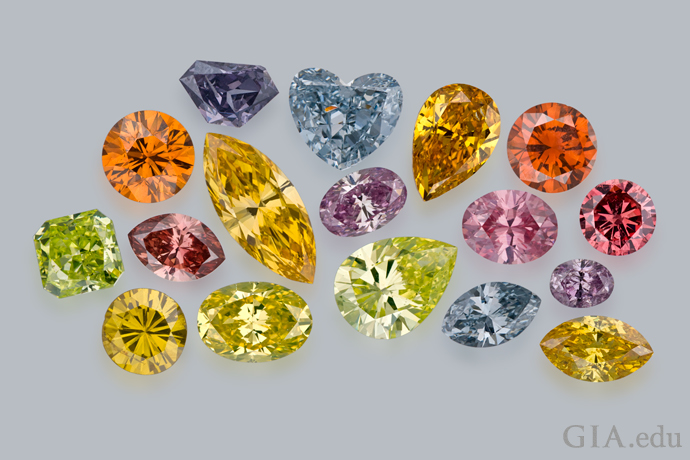
Colored diamonds come in a rainbow of hues. Photo: Robert and Orasa Weldon/GIA
GIA grades colored diamonds differently from colorless diamonds. Unlike GIA’s D-to-Z grading system for colorless to light yellow diamonds, which is based on the absence of color when the diamond is viewed table down, the grading system for colored diamonds is based on the presence of color when the diamond is viewed face up. Terms used by GIA to describe colored diamonds include: Faint, Very Light, Light, Fancy Light, Fancy, Fancy Dark, Fancy Intense, Fancy Deep and Fancy Vivid.
What to look for in colored diamonds? In general, the more color a colored diamond has, the better. Fancy Deep and Fancy Vivid diamonds, for example, have more color than Fancy Light diamonds—and are usually more valuable. However, tone is also important: For example, a diamond that is extremely dark (Fancy Dark) may be less desirable than a lighter stone graded Fancy Intense.
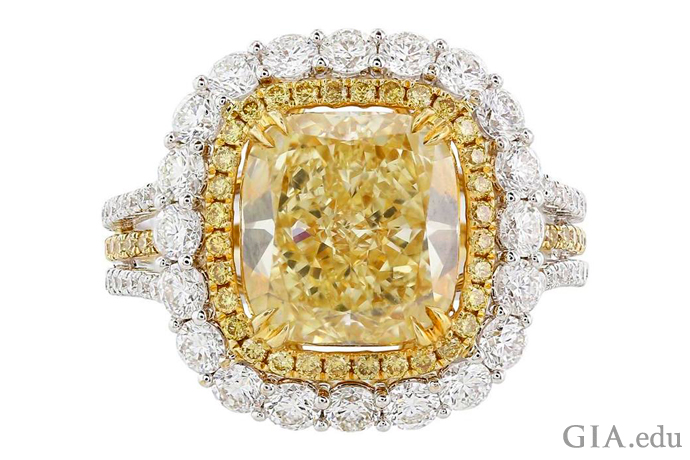
Colored diamonds can be far more expensive than colorless diamonds. Here a 3.66 ct Fancy Yellow glows like a ray of sunshine. Two halos encircle it: the inner containing 0.37 carats of yellow diamonds; the outer, 1.50 carats of colorless diamonds. Courtesy: 1stdibs.com
Fancy-color diamonds are, for the most part, far rarer than diamonds in the D-to-Z color range. Some experts estimate that only two percent of total rough diamond production is fancy colored. Since rarity influences price, it’s not surprising that spectacular blue, pink, green, orange and other colored diamonds can sell for millions of dollars at auction.
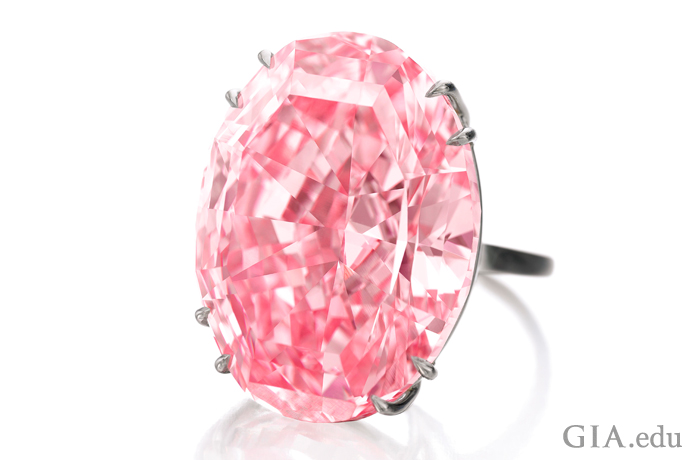
The GIA-graded Fancy Vivid pink 59.60 ct Pink Star diamond sold for $71 million at the April 4, 2017 Sotheby’s auction in Hong Kong. Courtesy: Sotheby’s
4. Treatments can improve diamond color
Diamond color can be altered by treatments. All else being equal, diamonds that have not been treated are more expensive than diamonds that have been treated. Legally, the seller must disclose any treatments. If you are aware what diamond color is, it’s easier to understand how they have been treated.
High pressure, high temperature (HPHT) processing is perhaps the most common technique used to alter, enhance or remove color. HPHT treatment can change some brown diamonds into colorless ones or into other colors like yellow, greenish yellow or green. This process is also associated with treated pink, blue and orange-yellow diamonds. The resulting color is considered permanent, but HPHT treatment should always be disclosed.
Annealing is another process that uses controlled heating and cooling to change the color of a gem material, especially after irradiation. Irradiating a diamond or coating it are other methods used to enhance a diamond’s color.
.
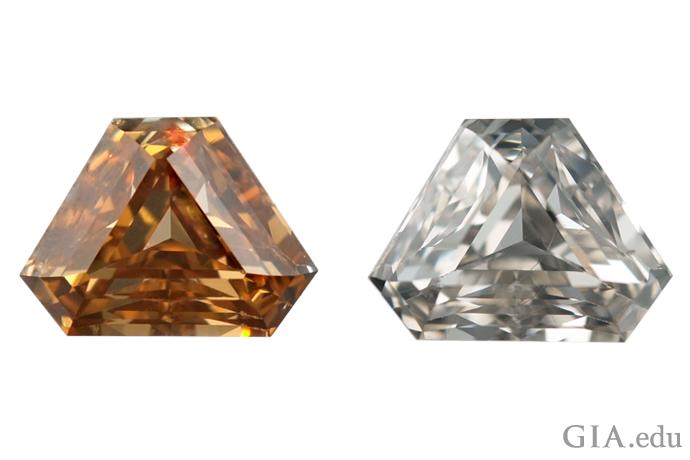
Before HPHT annealing to remove color, this 6.61 ct diamond was a Fancy yellow brown (left). After annealing (right), GIA graded the diamond an L (faint yellow). Photo: Robert Weldon/GIA
5. Diamond fluorescence has little to no impact on diamond color
Diamond fluorescence is visible light temporarily emitted by some diamonds when they are exposed to ultraviolet (UV) rays from the sun, fluorescent lamps or other sources. This emitted light can display various colors (often blue in diamonds), intensities (faint to very strong) and distribution patterns. When the light source is removed, the fluorescence is no longer visible.
Many in the diamond trade believe that strong blue fluorescence can make a light yellow diamond look closer to colorless when exposed to a UV source such as sunlight. Blue and yellow are color opposites and tend to cancel each other out, so blue fluorescence masks the yellow color. In rare cases, some diamonds with extremely strong fluorescence may appear slightly hazy or oily. Fewer than 0.2% of the fluorescent diamonds submitted to GIA exhibit this effect.
.
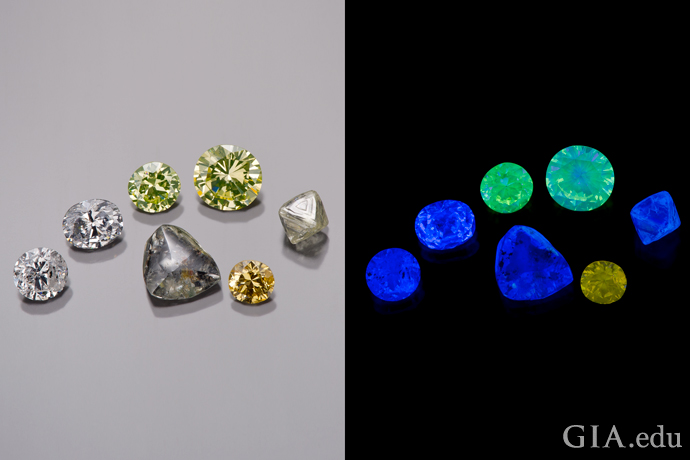
The same group of seven diamonds is shown here under daylight-equivalent illumination (left) and when exposed to long-wave UV irradiation (right). Photos: Kevin Schumacher/GIA
To answer questions from consumers and the trade about the impact of fluorescence on diamond color in the D-to-Z range, GIA conducted extensive observer testing. Here’s what its researchers found: “For the average observer, meant to represent the jewelry buying public, no systematic effects of fluorescence were detected [on the face-up appearance of the groups of diamonds]. Even the experienced observers did not consistently agree on the effects of fluorescence from one stone to the next.” As a result, GIA considers diamond fluorescence to be an identifying characteristic, not a grading factor – meaning, it has little to no impact on what color the diamond is.
6. Engagement ring settings can influence the perception of diamond color
Diamonds are highly reflective – their facets are essentially an arrangement of tiny mirrors reflecting light and the surroundings. So it should come as no surprise that the color of a ring’s prongs and shank can influence the color you see in the diamond. A white metal like platinum or white gold can emphasize the absence of color in a diamond that is colorless or near-colorless, while a gold band might make a diamond lower on the D-to-Z scale appear more yellow.
Learn more about how metal affects a diamond’s color appearance.
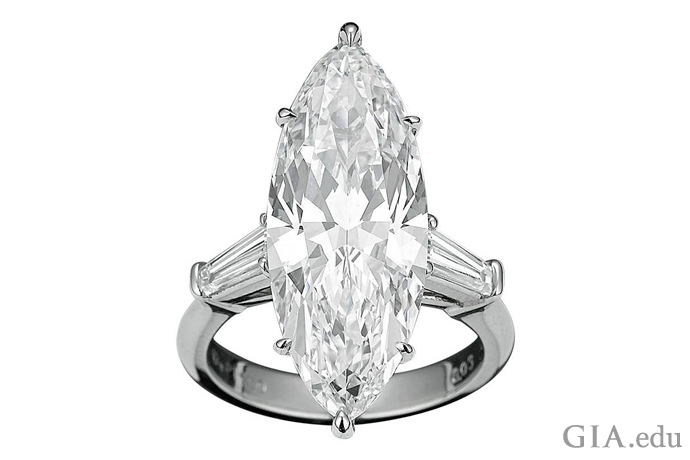
The 8.03 ct marquise cut diamond in this engagement ring is D color. It is flanked by two tapered baguettes weighing a total of 0.72 carats. The platinum band and prongs highlight the beauty of the diamond. Courtesy: 1stdibs.com
7. To be sure of a diamond’s color, get a GIA grading report
A GIA Diamond Grading Report and GIA Diamond Origin Report provides an in-depth assessment of a diamond’s quality based on the 4Cs: diamond color, clarity, cut and carat weight. A report not only contains an objective color grade, but it also discloses other identifying characteristics like fluorescence, as well as any treatments detected. Learn what diamond color information is included in a GIA report.
An engagement ring is profoundly intimate and symbolic – it represents your love and commitment. A GIA Diamond Grading Report lets you make this most important purchase with peace of mind.
Now that you understand what diamond color is and its importance, here are 12 tips for buying an engagement ring.
Lead image courtesy of 1stdibs.com
